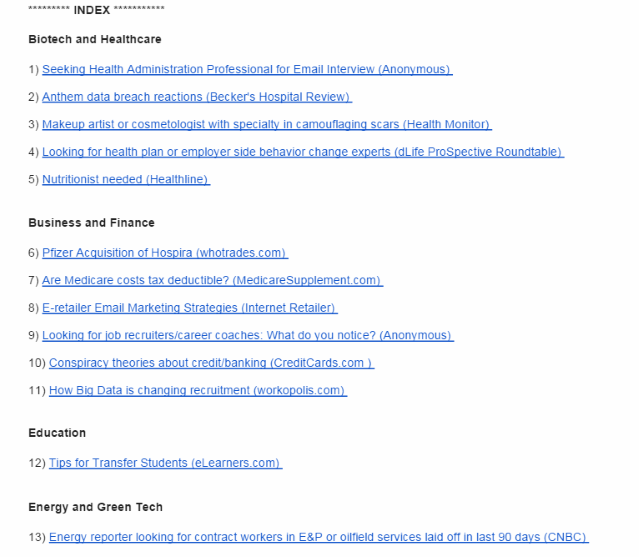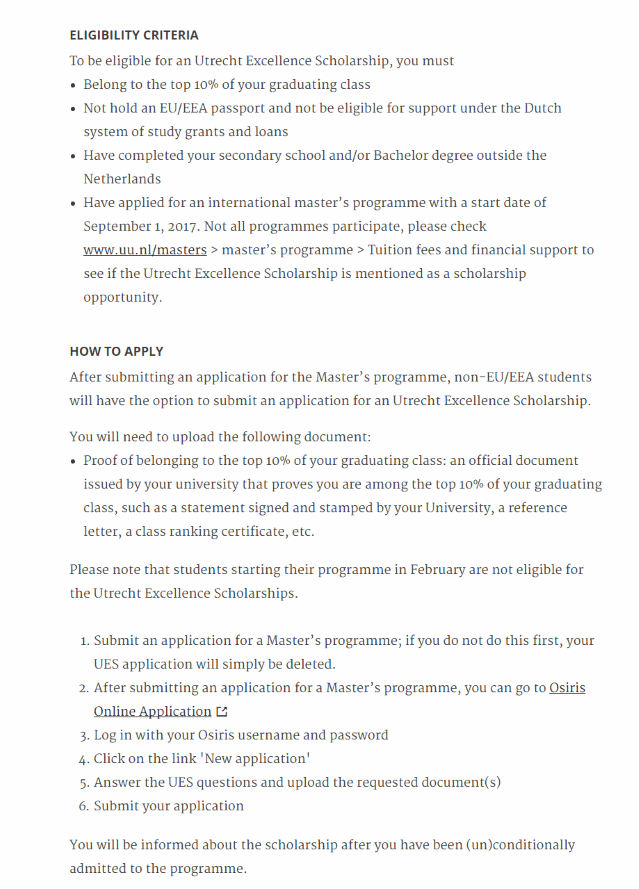
One Link to rule them all, One Link to find them, One Link to link them all and to my traffic bind them.
Welcome back, dear readers of the WebCEO blog! The time has come to pick up from where we left before and continue on our previous post – 7 Effective Link Building Techniques That Will Make Your Traffic Explode. Today’s list has even more helpful tips and methods for earning inbound links from high-authority resources: read them first and put the post’s material to good use later. Without further ado, let us begin!
1. Trade Your Product for Blogger Reviews
Many business owners can vouch for a certain backlinking strategy that they’ve employed time and again. To find potential bloggers for reviews, you can use WebCEO’s Competitor Backlink Spy to see where your competitors are getting their backlinks from.
Here’s the trick: you offer your product/service/subscription for free to bloggers who write reviews about such things.
There are a lot of bloggers in just about every money-generating industry: beauty and makeup, software programs, baby products, magazines and so forth. In fact, product reviews are a nice way to make a living in their own right, which is why bloggers write about products they’ve received for free in the first place. Naturally, those reviews have a link pointing to the business offering the product, and thus a symbiotic relationship between bloggers and business owners is formed.
So there you have it: product review blogs. You can replace the word “product” with whatever it is you sell, and you’ve pretty much figured out how to find bloggers in your niche who may be interested in doing the job. All that’s left is to reach out to them, offer them a gift and wait for results.
Warning: you MUST NOT ask them for a backlink or a review in your email, as that violates Google Webmaster Guidelines and could get you in trouble. You can’t be direct about this.
2. Do Favors and Jobs, Ask for Links in Return
This feels like a weird place to return to basics, but here goes anyway. Wise words first spoken by someone much wiser than me: the best backlinks are born from naturally forged relationships between websites. Partnership, cooperation, mutual support, owing someone a favor, occasionally even friendship. Some online buddies get overly enthusiastic with linking to each other, and then Google penalizes their sites for partaking in a link exchange, so there’s that to consider. Don’t get carried away when building links!
Having said that, let’s talk about things that are okay to do. Here are a few examples:
- Design a banner for another person’s site
- Write a piece of programming code for somebody’s project
- Contribute to a group project (assuming the report will have credits)
- Translate a chunk of text into a different language
- Write a high quality guest post
Or, simply put, give others a helping hand and do work that benefits them.
You’ve likely noticed that some of the points in the list above sound like freelance activities, and you’d be right: linking to freelancers who make improvements to other people’s projects is ordinary practice. The same is true for full-fledged companies that just do their jobs as expected. And of course, helping without any payment is perfectly fine, too. Those are all acceptable reasons to ask for a link back to one’s own site.
Summary: just make use of your network. This advice is as simple and basic as it gets.
3. Help a Reporter Out (HARO)
An extremely competitive, but effective and worthwhile method of earning inbound links is helping journalists gather material for their articles. Not by reaching out to them directly, though; that would be the equivalent of writing a book and personally giving it to somebody who just wants to pay a visit to the library. In this analogy, the online library is the website HARO, which is the most popular sourcing service for news people.
Here’s how it works. After you register at HARO as a source, emails about reporters looking for sources will start coming every day (3 times a day, at fixed times). Most of the requests will probably be irrelevant to you, but some of them are bound to be related to your niche.
An example of what emails from HARO look like.
You will want to write a response that fully answers the reporter’s questions included in his or her email. Rule of thumb is, write something that can be inserted in the article right away: detailed, informative, professional. That’s the only kind of a response that will do the trick; anything less, and you might as well not bother. Conclude your reply with your author bio and a link to your site.
If the reporter is satisfied with your email, you’ll be informed about its success. That’s how you’ll know you’ve earned a backlink. Don’t forget about the deadlines! Monitor the success of your efforts using WebCEO’s Online Rank Checker to see the impact on your site’s ranking.
4. Create a Scholarship
Next is one of the more ambitious link-building methods.
Everyone knows that .edu domains are among the highest in terms of authority, and thus links from them are coveted by webmasters. In the previous post, we described one of the possible ways to claim a .edu backlink: that is, to interview a university professor. Now we’ll share another. You can help universities and students by creating your own scholarships.
It’s a process that requires dedication and can get downright harrowing. There’s just so much to consider! What kind of task will the students perform? How much will you pay the winner (and how will the funds reach them)? What are the conditions of winning? Who is and isn’t eligible for applying, how will the participants contact you, how will you communicate with them, how do they submit their essays or whatever, what is the deadline? It’s weeks, potentially months of work: don’t forget you’ll have to read through lots of submissions in order to pick the winner. Scholarship making involves hectic planning and answering many questions after you’ve asked them all yourself. Then you can proceed to make a web page for your campaign. Feel free to make it creative and pretty.
That was step one.
Don’t worry, it gets easier from there. Step two is finding universities that link to scholarship pages on other sites. All you need to do here is type inurl:.edu “scholarships” in Google’s search bar, then pick whatever strikes your fancy.
And finally, step three: contact the universities via email and let them know about your campaign. Things you should include are: name of your scholarship, its description, list of your requirements and, of course, the link to your scholarship page. Wait for the reply and don’t relax until there’s a winner and the campaign becomes a happy memory. You’ll do your best to make it a happy memory, right?
This method is difficult and will cost you much more than money. But if you can make it run smoothly, the wonders it will do to your resource’s domain authority are well worth it. If you’re considering this ambitious link-building method, use WebCEO’s Quick Domain Analysis to research and find relevant educational institutions to reach out to for your scholarship program.
5. Hold a Contest
This is something that seasoned marketers are well familiar with. There are several ways to remind the world about one’s brand, and a contest is guaranteed to excite your target audience. It’s like stirring up a hornet’s nest, except everybody enjoys it and you don’t get stung. Unless you do a poor job and lose money in the end.
Contests are a high risk, high reward method of building links to your site. Or they can be high risk, low reward just as well. It all hangs on implementing a smart marketing campaign, knowing your customer and outclassing your competitors. The process has more than a few similarities to creating scholarships for the same purpose, I might say. Focusing solely on the prize just won’t cut it.
By the way, the purpose of participation doesn’t have to be money. I’ve seen more than one online contest held for no other reason than just giving the facilitator’s friends something fun to do. I even won a couple of times!
6. Create Viral Content
Our previous post talked about infographics as an example of potentially viral content. What’s there to be said? People love things that are entertaining and leave an impression, and they like to show such things to each other. The Internet is an especially good medium for that. Plenty of people do nothing but look at funny pictures and videos all day. This sort of content is in high demand!
Few Epic Rap Battles of History were as epic as this one. No wonder it’s a viral series.
So let me name a few more examples of online entertainment that earn as many as or even more links than infographics:
- Pictures of cute animals
- Inspirational quotes
- Controversial posts
- Humorous content
- Shocking content
- Overly long lists
- Trending topics
- Breaking news
- Curious facts
- Quizzes
Few people know in advance which piece of content they make will go viral, but most of the time it’s things that cause a noticeable emotional response in the viewer. Be it excitement, adoration, laughter, surprise or even anger and sadness. (Yes, negative emotions work, too. As long as they aren’t directed at you or your site.)
7. Speak at Events and Meetups
When you have earned yourself some reputation and others consider you important enough a figure to speak at events, you can use it to your advantage. If the host has a website which, in turn, announces the event on one of its pages, all you need to do is ask the host to mention you and your own site there. Done! You have yourself a new backlink! (Sometimes they’ll do it before you even ask.)
Just think about it: the larger the audience that will attend, the more traffic they can give you. Ah, delicious fruits of fame…
For an extra boost, you can ask any bloggers you know to visit the event so they could write about it (and you) later.
8. Get Involved in Link Round-Ups
Some bloggers release compilations of links to other posts (both on their own blogs and from other sites) every week or month. Sometimes even every day, but those would come from a big blogging team more often than not. Such compilations are called link round-ups, and their purpose is pretty much what it looks like: to share good content from sources other than the blog itself.
So if you have a piece of good content that you’ve made recently, you can become one of those sources, too! It’s easy enough that it can be summarized in a few short steps.
- Have fresh, high quality content ready on your site.
- Find sites in your niche that do link round-ups. It can be done with a single Google search.
- Email the people who publish round-up posts and suggest they mention your content in their next update. Mind the etiquette.
If your content is deemed a good fit, you’ll see a new inbound link in the next round-up. You might want to check that site’s domain authority in advance, though.
The opposite can happen, too: the blogger can take the initiative and reach out to the sources. As an example, he or she can choose a number of experts, ask them a few questions and include their answers in the post – along with links to their sites.
As a downside, you don’t have a lot of control in a situation like this, even though it also earns you a backlink. Unless the roles are reversed and you are the one gathering material. Then, after you’ve published your round-up, you can ask your experts to link to it on their own sites. Keep a couple of things in mind:
- Not all sources may respond, so reach out to as many as possible.
- Give them a deadline, or they will simply forget to write an answer.
9. Do Something Newsworthy
Now I’m going to tell you about the most difficult link building technique known to man. It’s harder than anything you’ve done or read about so far. Are you ready? Here it is:
Become famous.
Okay, that’s probably not as difficult as it seems. There once was a guy named Herostratus who immortalized his name despite his fellow men’s best attempts to stop that from happening, although his methods were more than questionable. Or maybe he got what he wanted because of their attempts. Whatever the case, it certainly wasn’t because of the Internet which didn’t exist back then.
But now we’re in the digital age. Modern technology makes it possible for news to spread like wildfire. Whenever there’s news, people can’t resist sharing them and putting their two cents in at the first opportunity. Big commotions spark big discussions; that’s how we humans evolved. If we can link to something in our online chit-chats, we inevitably will. And if you were somehow to become a subject of a burning topic, you won’t be an exception: there’s a significant chance others will link to your site at least once per discussion. Excitement may be quenched with time, but the links will remain.
There’s no universal way to make oneself famous in real life, at least none that doesn’t involve doing embarrassing things in the heat of the moment. Nevertheless, it’s the truth that people like to gossip and discuss interesting topics in general. And when they do it online, links fly around like wild birds in the spring. Who knows, all those birds could be yours someday!
For the complete list of the most effective link building methods, tips and strategies, please download the 17 Ideas for Killer Link Building in 2017 checklist below. The full checklist is available only to WebCEO users. Sign up now and gain the upper hand over your competitors!






